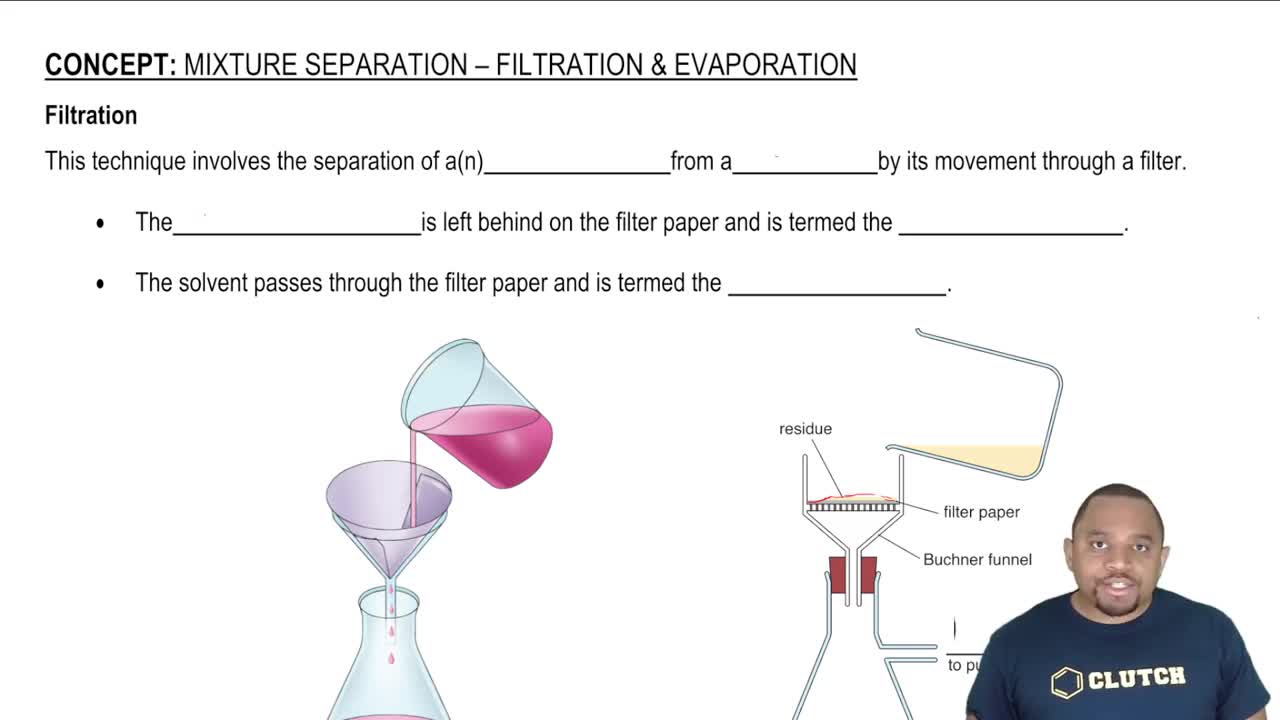Label each of the following as either a physical process or a chemical process: b. boiling a cup of water
For each of the following processes, would filtration, distillation, or chromatography be the most effective separation technique:
a. removing the pulp from freshly squeezed orange juice,
b. separating a food dye into its individual components,
c. desalinating seawater?

Verified Solution
Key Concepts
Filtration

Distillation

Chromatography

Label each of the following as either a physical process or a chemical process: c. pulverizing an aspirin
A match is lit and held under a cold piece of metal. The following observations are made: (a) The match burns. (b) The metal gets warmer. (c) Water condenses on the metal. (d) Soot (carbon) is deposited on the metal. Which of these occurrences are due to physical changes, and which are due to chemical changes?
A silvery metal is put inside a beaker of water. Bubbles form on the surface of the metal and it dissolves gradually. (a) Is this an example of a chemical or a physical change?
A soccer ball is dropped out of a window on the second floor of a dormitory to the ground below. Which of the following statements is or are true?
i. The kinetic energy of the ball is greatest at the time it is dropped out the window.
ii. As the ball falls, potential energy is converted into kinetic energy.
iii. The potential energy of the ball is due to the force of gravity acting on it.
(a) Calculate the kinetic energy (in joules) of a 1200-kg automobile moving at 18 m/s.
